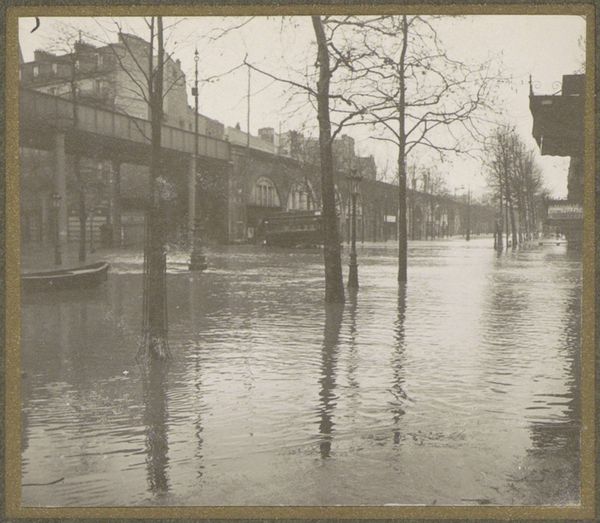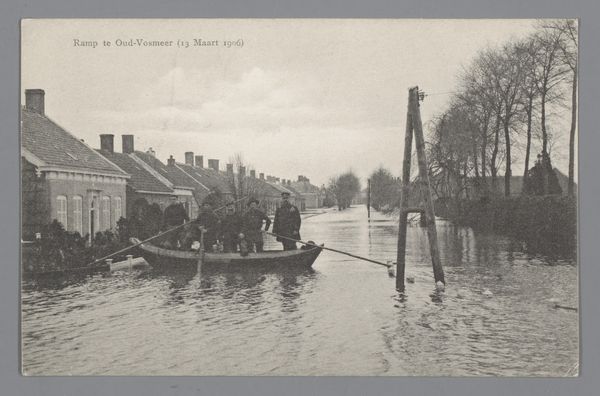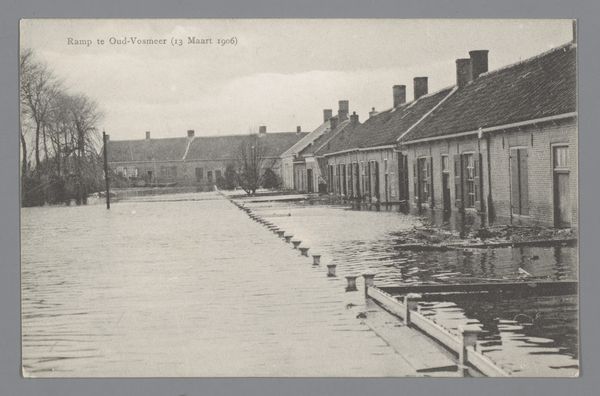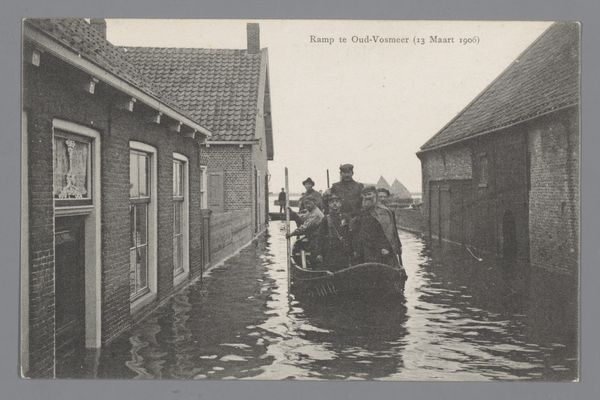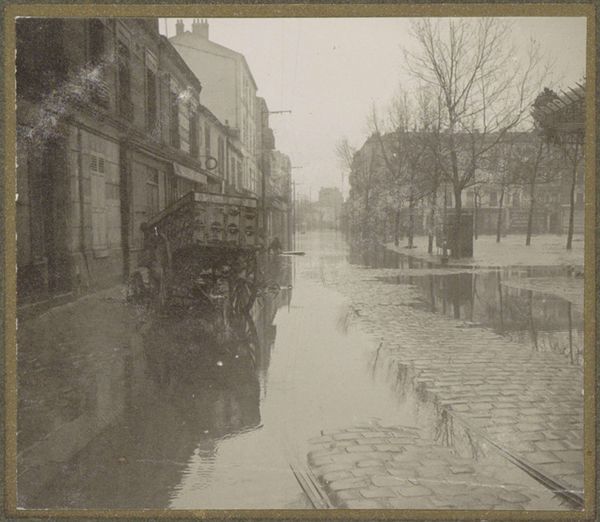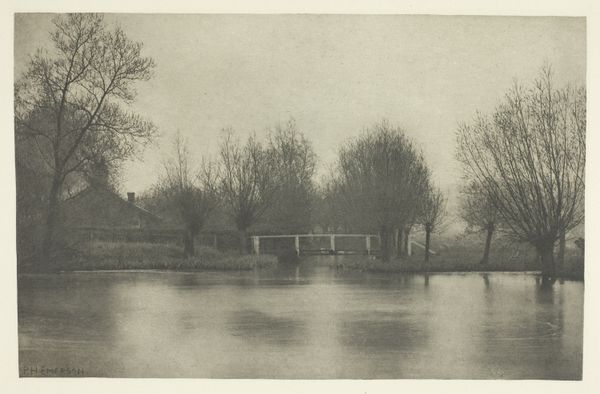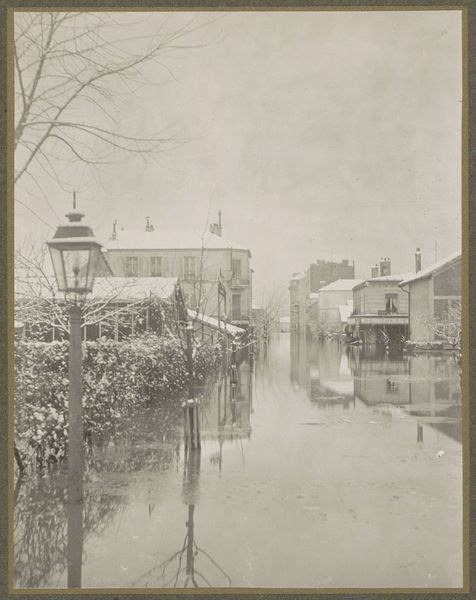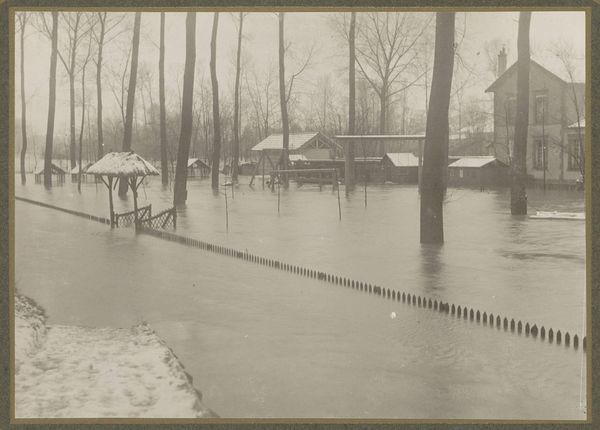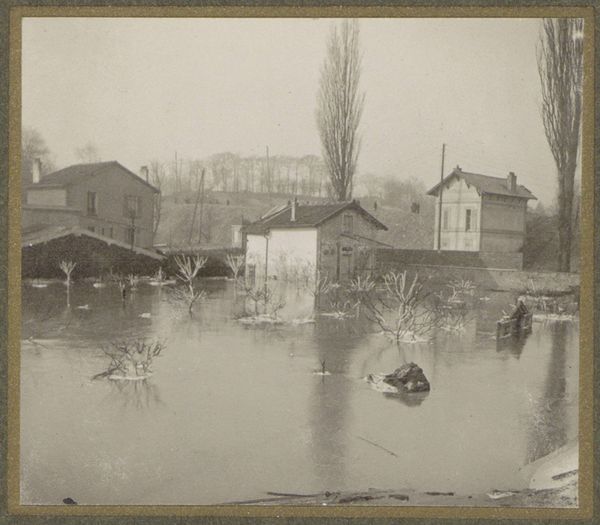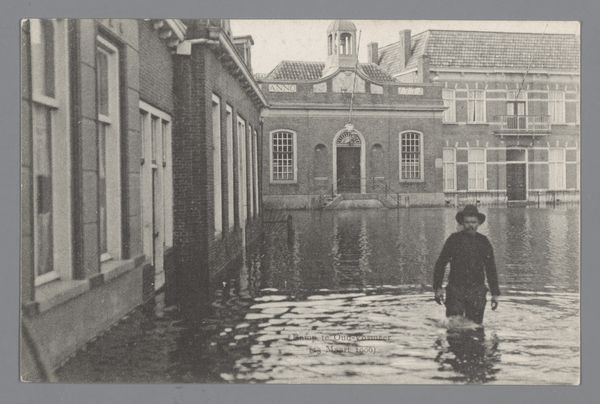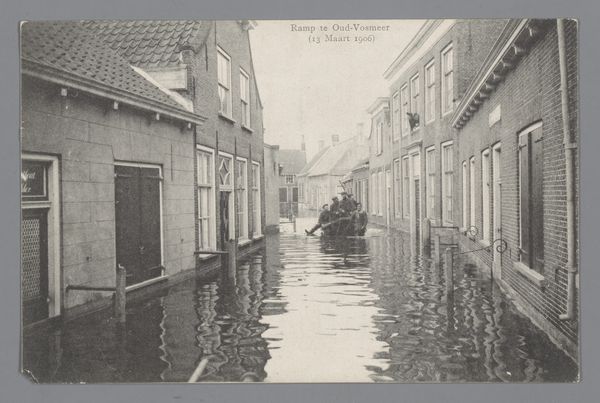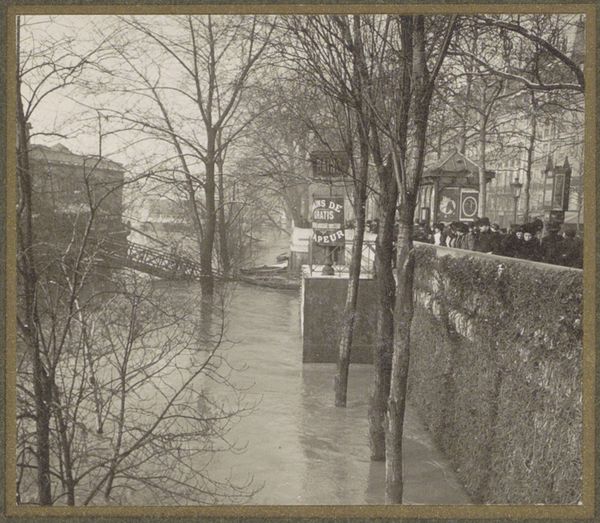
photography, gelatin-silver-print
#
landscape
#
photography
#
gelatin-silver-print
#
cityscape
#
realism
Dimensions: height 9 cm, width 14 cm
Copyright: Rijks Museum: Open Domain
Curator: Looking at "Ramp te Oud-Vossemeer op 13 maart 1906" by Gebroeders van Straaten, it's hard to not feel the overwhelming weight of the historical event captured. A gelatin silver print taken on March 13, 1906, it really speaks to our current climate concerns as well. Editor: It certainly is stark. My first impression is the complete disruption of the everyday. The high water line is shockingly high—practically swallowing those buildings whole, turning what should be solid ground into a lake. Curator: Indeed, and what's compelling here is the deliberate act of creating an image from such devastation. Photography, though nascent at the time, becoming a tool for documenting societal disruptions, even catastrophes. Note how they are using readily available and relatively affordable gelatin silver to record this event. Editor: Right, this is a moment when photography transitions from high-art portraiture to a social record. The print itself is unadorned, no romanticizing— just a factual display of material and social impact; almost journalistic. Are there records of the photographer’s intent in distributing the images? Curator: Archival materials suggest that such images served multiple purposes— local record-keeping, informing the public, and perhaps even generating support for flood relief. The van Straaten brothers walk a tightrope between documenting fact and also generating an affect of pathos. Editor: Thinking of its place in history, what happened afterwards? Did the area become rebuilt to the same construction quality as before, or are there signs this had an impact on city development? Curator: Historical accounts reveal significant investments in improved water management following this event, influencing building designs and materials choices across the affected regions. Images such as this undoubtedly played a crucial role in garnering support for the infrastructural overhauls. Editor: So, in some sense, this seemingly straightforward image became a material argument for improved social structures and better building practices? Curator: Precisely, and this photograph, humble in its presentation as it might seem, underscores the intertwined relationship between environment, infrastructure, and communal well-being. Editor: I see it differently now, seeing the photograph less as a depiction of chaos, and more a material record— an important precursor to progress and an ever timely lesson on environmental vulnerability.
Comments
No comments
Be the first to comment and join the conversation on the ultimate creative platform.
